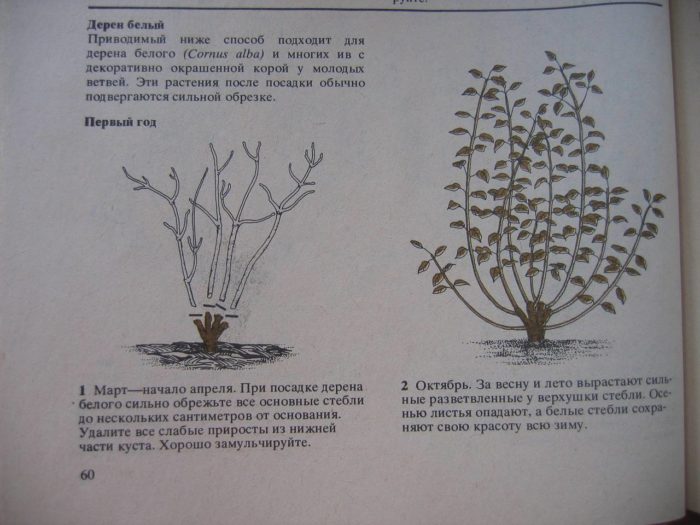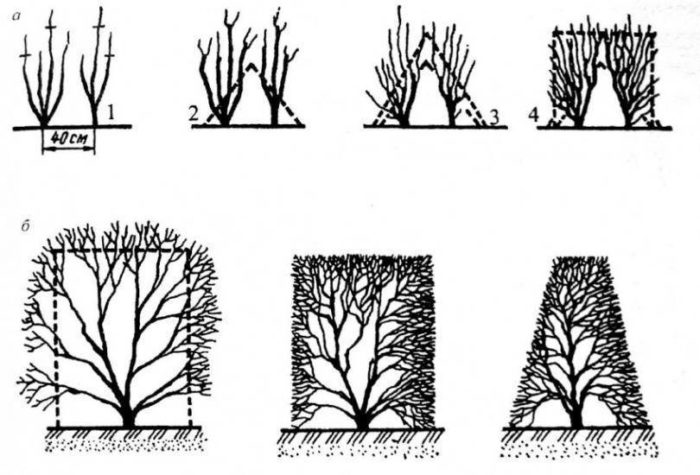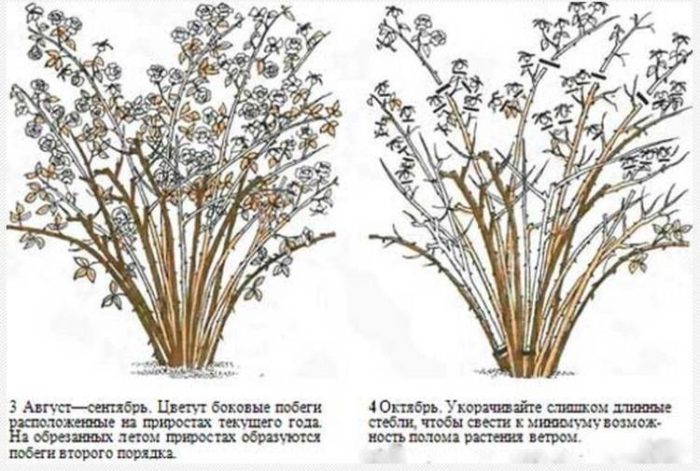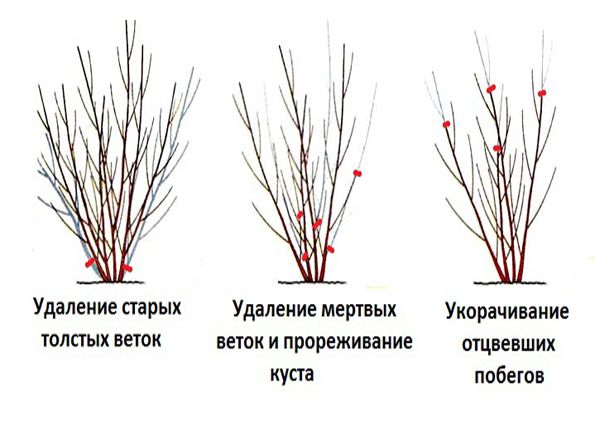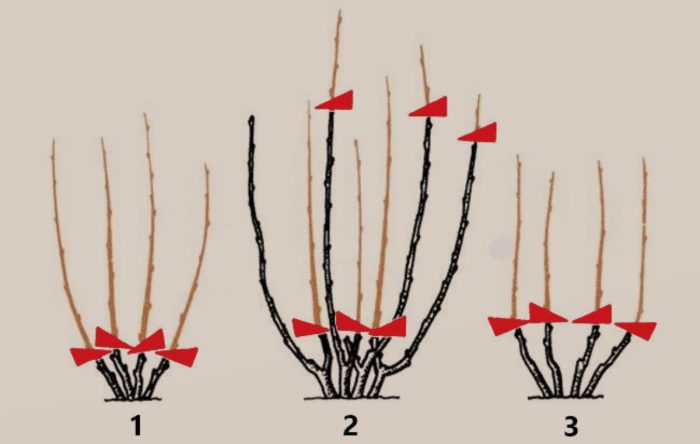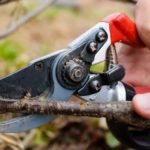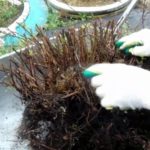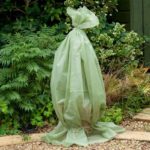The bladderwort got its name from its appearance. After flowering, the inflorescences of a deciduous shrub resemble bubbles. The plant, originally from North America, has been planted in Russian parks since the 19th century. It is used in creating hedges and group compositions. Decorating the garden is the main task of the bladderwort, so pruning is an important step in caring for ornamental shrubs.
Why do this
Pruning the bladderwort is mandatory from the second year after it is planted in open ground. Removing overgrown branches is required to maintain the shape and prevent diseases of the bush.
The bladderwort is pruned for the following reasons:
- the dense crown retains moisture from precipitation and evaporation from the ground;
- light does not penetrate inside the bush through the dense foliage;
- in a dark and humid environment, insects infest and fungus develops in the tangled branches of the plant;
- an unpruned bush slows down growth and blooms worse;
- Without pruning, a hedge or composition looks sloppy.
Bladderwort grows in partial shade and in bright light, depending on the color of the leaves. Gold and purple varieties require plenty of sun to keep them from fading. Stagnation of moisture is poorly tolerated by all types of bladderwort. Pruning maintains conditions favorable for plant life.
The shrub is resistant to frost down to -23 degrees. Pruning is required before and after wintering. In regions with mild winters, the bladderwort is not covered. An unpruned bush will become a haven for insects during the cold months.
In regions with harsh winters and snow, the bladderwort will have frozen and broken branches by spring. They need to be removed so that new shoots develop without interference. Spring pinching helps to grow young plants lush. Once every 5 years, the bladderwort undergoes anti-aging pruning - the bush is shortened by two-thirds. Small flowers and sparse leaves mean it’s time to rejuvenate the plant.
Timing
The frequency and timing of pruning the vesicle depends on the degree of its decorativeness. A hedge in a city park or in a strict landscape composition on an estate is trimmed in spring and autumn, and its shape must be corrected in summer. If the bush grows spontaneously in the country and does not perform a special decorative function, summer pruning can be neglected or only damaged branches can be trimmed.
Autumn pruning is carried out after the bladderwort has shed its leaves.The shrub falls from September to November, depending on the climate in which it grows. There are no clear deadlines for autumn haircuts. The main landmark is the end of leaf fall. This means that the vegetative cycle has completed and the plant will not lose juice.
You should not delay autumn pruning, as the bush needs two weeks to recover before frost.
There are also no clear deadlines for pruning in the spring. You need to focus on the weather and the condition of the plant - the end of frost before the start of sap flow and the appearance of buds. Depending on the climate, this time falls at the end of March and April. The best time of day and weather to prune the plant is a cloudy, dry morning.
In summer, the bladderwort is pruned after it has finished flowering. Flowers appear on plants at the age of 4-5 years. Flowering months are from June to July, for three weeks. The time for summer pruning occurs around the end of July, beginning of August. To maintain their shape, the vesicular carp bushes are additionally pruned after the leaflet fruits fall - in September.
What tools to prepare
The bladderwort forms a rounded crown of straight shoots. The bark of the plant is hard, brown, in mature plants of some varieties it is covered with cracks and peels off in places.
To trim lignified and young branches you will need a set of tools:
- pruner - something between scissors and nippers, cuts shoots up to 25 millimeters thick. Dry and green branches of the current year are trimmed with pruning shears;
- lopper - similar to pruning shears, only with a long handle, cuts branches 30-50 millimeters thick. The tool is useful for crown thinning and anti-aging pruning; it is used where pruning shears cannot be reached;
- brush cutter - resembles large scissors, has a blunt lower blade and a sharpened upper blade.Use a hedge trimmer to trim the tops and give the hedge a flat shape;
- garden saw - differs from a regular saw in large teeth. Use a garden saw to remove thick branches inside the bush, at the base.
There are different types of pruning tools - mechanical, electric, gasoline. Each gardener chooses equipment based on his own experience. To remove branches, do not use a brush cutter with a wave-shaped sharpening. It is suitable for cutting coniferous shrubs and branches 1 centimeter thick.
An additional tool in the arsenal is a garden knife. It is used to correct cuts and trim thin branches. You will also need gloves for the job to protect your hands from accidental scratches and cuts.
Formation process
Before pruning, bladderwrack bushes need to be prepared: remove mulch and leaves from the tree trunk circle, and remove the remaining foliage from the branches in the fall. Then you need to visually outline the shape and which places inside the crown to thin out.
On young shrubs it is useful to study the structure of the crown, how the main and peripheral branches are located. Later, this will help you notice the direction of growth of the bush, the appearance of small branches that need to be removed.
Methods for cutting bladderwort:
| Name | Description |
| Sanitary | Trim all damaged branches or parts thereof, regardless of the shape of the bush.
Make the cut 0.5 centimeters beyond the damage so that the rest of the branch is completely healthy.
|
| Formative | In the second year after planting, the bush is shortened by half. In subsequent years, a third of the length of the branches is removed. |
| Rejuvenating | A third of the length of the bush is left, even the main branches are cut off. |
The original way of pruning the vesicle is in the form of a standard. As a result, the bush looks like a small tree. To do this you need:
- leave one main branch as a trunk;
- cut off the lower branches, leave the top;
- periodically trim the trunk shoots.
The top is made flat or rounded. Another way to trim is in a fountain shape. It is similar to the standard one, only the main branches are not removed, but only the peripheral ones are cut from below and a larger volume is left at the top. In addition, the bladderwort is trimmed in the form of a hedge and given a curly shape using frames.
Hedge
A green barrier of bladderwort begins to form upon planting. To ensure that the bush has enough space for crown development, the seedlings are placed in two rows in a checkerboard pattern with an interval of 35-40 centimeters. The plant is planted in one row, but the distance between the seedlings is kept the same.
The first pruning is carried out the next year after planting according to the following scheme:
- in spring the branches are shortened to 15 centimeters;
- in summer, if desired, the tops are leveled;
- next spring, the upper branches are cut in half, the side branches by 5-10 centimeters.
The top of the bladderwort hedge is trimmed for two years. When the plant is four years old, a break is taken in the molding pruning to allow the crown to grow.
The shape and height of the hedge are determined in the first two years of growth of the bush in open ground. In subsequent years, the plant does not need to be spared, cutting off only the topmost branches. The green barrier must be shortened to the specified height.
To fix the height, gardeners use stakes with tensioned wire. Gradually the structure will disappear into the foliage. When the time comes to remove the overgrown green mass, the wire will help make the bushes even.
Trimming the bladderwort using a wire outline will be convenient for novice gardeners.If the clarity of the lines is not important, the bush is shortened by eye.
Frame
Wire frames are used to give vesicular carp bushes regular and irregular shapes. With their help, animals, labyrinths, spirals, even pieces of furniture and a human figure are created. As with a hedge, preparation for shaping begins when planting a seedling according to the following scheme:
- a frame is installed in the tree trunk circle around the young plant;
- next spring, the branches are trimmed to the shape of the frame;
- in subsequent haircuts, branches that protrude beyond the wire are trimmed;
- In the fifth year of the bush’s life, the shaping pruning is skipped and only the damaged branches are pruned.
The frame for geometric shapes is eventually removed, and the bush is cut by eye or a template is used.
The bladderwort is suitable for forming a ball with a diameter of 1 meter or more. Nurseries sell bushes that are already round and will only have to maintain their shape. You can also make a ball yourself from a two- or three-year-old plant. After a rejuvenating haircut, the bladderwort is also able to take on a curly shape.
Trimming shrubs using a frame is called topiary shaping and is gaining popularity among summer residents and owners of personal plots. Curly bushes take up less space than those with a full crown. Compositions with topiary bladderwort are good for small gardens.
What to do after pruning
Caring for trimmed bladderwort includes fertilizing and antiseptic treatment. Thick branches on cuts must be treated with an antiseptic, for example, garden varnish. Without disinfection, the plant will be vulnerable to infections, and after cauterization, the cuts will overgrow faster.Antiseptic treatment is done after anti-aging and sanitary pruning.
After all types of pruning, the bladderwort needs nutrients. Trimmed shrubs are fed according to the season:
- in the spring - with organic fertilizers, infused mullein diluted in water (5 kilograms per 10 liters). Before feeding, the plant needs to be watered;
- in summer, autumn - with mineral fertilizers, a solution of potassium and phosphorus.
Pruning is stressful for plants. To make the vesicular carp more easily tolerate separation from the branches, it is treated with drugs to strengthen and stimulate growth, for example, “Zircon”, “Epin Extra”, “Radifarm”.
After pruning, it is also necessary to clean and disinfect gardening tools. Secateurs and saws are washed in water and treated with lubricants to preserve the metal. It is important to keep pruning equipment in order, as dull and rusty blades damage the plant.

